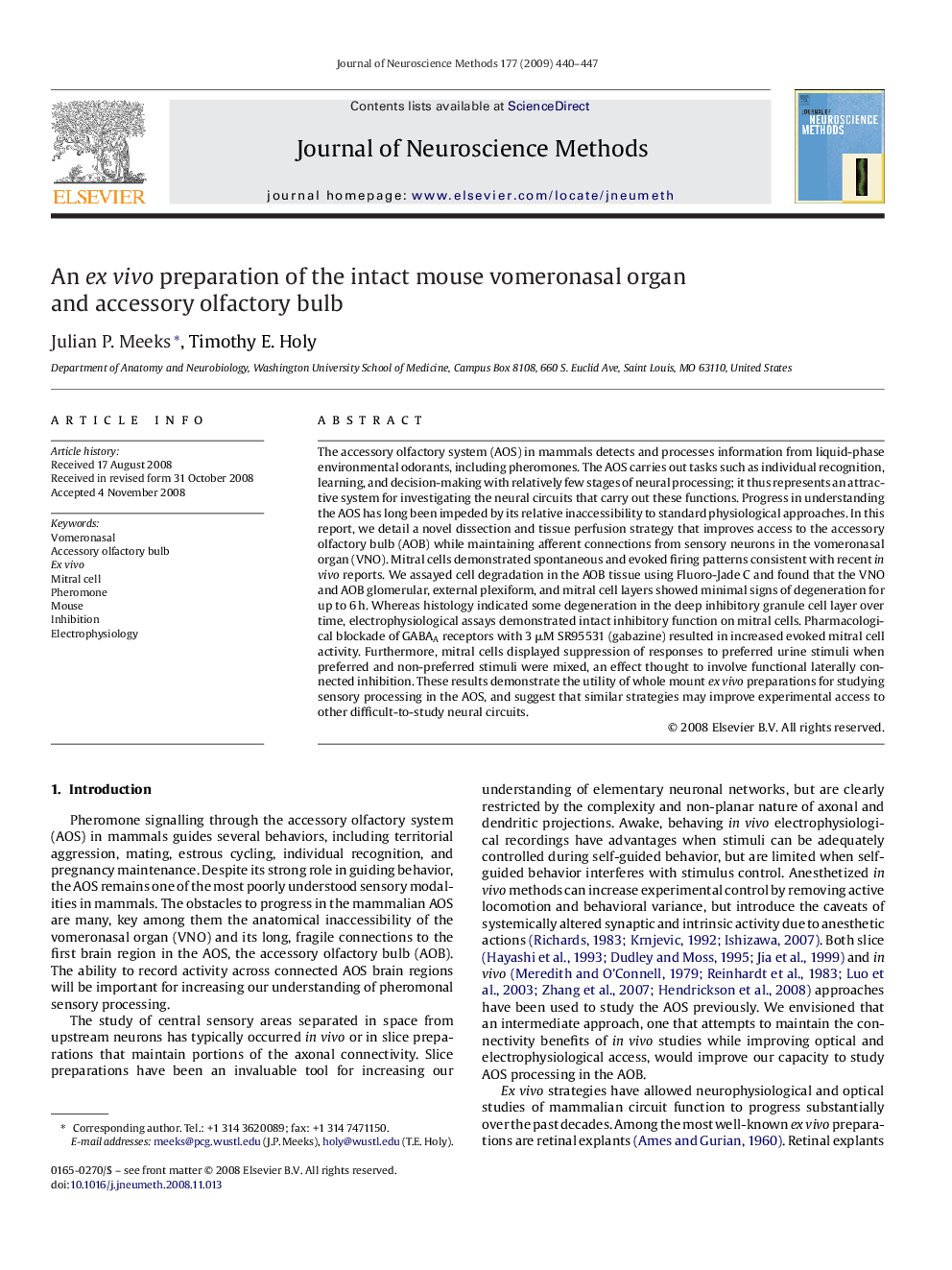| Article ID | Journal | Published Year | Pages | File Type |
|---|---|---|---|---|
| 6270327 | Journal of Neuroscience Methods | 2009 | 8 Pages |
Abstract
The accessory olfactory system (AOS) in mammals detects and processes information from liquid-phase environmental odorants, including pheromones. The AOS carries out tasks such as individual recognition, learning, and decision-making with relatively few stages of neural processing; it thus represents an attractive system for investigating the neural circuits that carry out these functions. Progress in understanding the AOS has long been impeded by its relative inaccessibility to standard physiological approaches. In this report, we detail a novel dissection and tissue perfusion strategy that improves access to the accessory olfactory bulb (AOB) while maintaining afferent connections from sensory neurons in the vomeronasal organ (VNO). Mitral cells demonstrated spontaneous and evoked firing patterns consistent with recent in vivo reports. We assayed cell degradation in the AOB tissue using Fluoro-Jade C and found that the VNO and AOB glomerular, external plexiform, and mitral cell layers showed minimal signs of degeneration for up to 6 h. Whereas histology indicated some degeneration in the deep inhibitory granule cell layer over time, electrophysiological assays demonstrated intact inhibitory function on mitral cells. Pharmacological blockade of GABAA receptors with 3 μM SR95531 (gabazine) resulted in increased evoked mitral cell activity. Furthermore, mitral cells displayed suppression of responses to preferred urine stimuli when preferred and non-preferred stimuli were mixed, an effect thought to involve functional laterally connected inhibition. These results demonstrate the utility of whole mount ex vivo preparations for studying sensory processing in the AOS, and suggest that similar strategies may improve experimental access to other difficult-to-study neural circuits.
Keywords
Related Topics
Life Sciences
Neuroscience
Neuroscience (General)
Authors
Julian P. Meeks, Timothy E. Holy,
